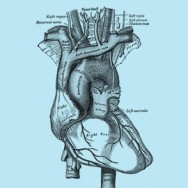
Aortic Arch Surgery
Background
The aorta is the large artery that leaves the heart and provides oxygen-rich blood throughout the body. It first travels upwards, before bending backwards (the arch) and downwards to supply the lower parts of the body. The branches of the arch supply blood to the brain, head and arms. Many conditions can cause the aorta to dilate (widen), dissect (tear), or rupture. These are often life-threatening and require emergency surgery to repair them. The conditions that can lead to this include atherosclerosis (fat and calcium buildup in the arteries), hypertension (high blood pressure), genetic conditions (such as Marfan Syndrome), connective tissue disorders (such as Ehler-Danlos disorder, scleroderma) and direct trauma.
About the surgery
First the heart and aorta is accessed by dividing the sternum (breast bone). Then the patient is put on the heart-lung machine and the heart is stopped beating. The circulation through the aortic arch must then be stopped so that the diseased segment can be removed, and a synthetic replacement graft inserted.
Since the circulation is stopped during the repair a number of precautions are taken to prevent brain injury. The patient is cooled to between 18-28 °C, which reduces the activity of cells in the brain and body to a level low enough that prevents injury from occurring for a short time. A separate heart-lung machine circuit can be setup, which allows blood to flow to the brain whilst the circulation in the rest of the body is stopped (referred to as “selective antegrade cerebral perfusion”). At Sydney Heart & Lung Surgeons a “tetrafurcated graft technique” is used for this operation, which enables this separate circuit to be setup.
Depending on the extent of the aortic disease, a stent may also be inserted into the descending part of the aorta. Once the replacement graft has been sewn into place and all the artery branches reconnected, the circulation is started again and the patient is slowly rewarmed back to normal temperature.
Recovery period
Patients usually stay in the intensive care unit for 1 – 2 days for monitoring, and then in the nursing unit for 4 – 5 days. Two to three tubes stay in the chest to drain fluid from around the heart, which are usually removed 1 – 3 days after the surgery. Full recovery usually takes about 2 months. Your surgeon will provide specific guidelines for your recovery and return to work.
Risks of the surgery
Because of the complexity and often emergent nature of these operations there are some important risks. These include stroke, bleeding, lung failure, kidney failure, damage to the bowel, and death. Your surgeon will discuss these risks with you, as they are balanced with the risks of not intervening.
The rate of these complications is lower in experienced centres. Surgeons at Sydney Heart & Lung Surgeons have performed many of these procedures with excellent results, and have published these results in international journals.
For more information please visit:
Cleveland Clinic Aorta Disease & Marfan Syndrome
All patients should consult their cardiothoracic surgeon for specific information about their medical condition and surgery.

